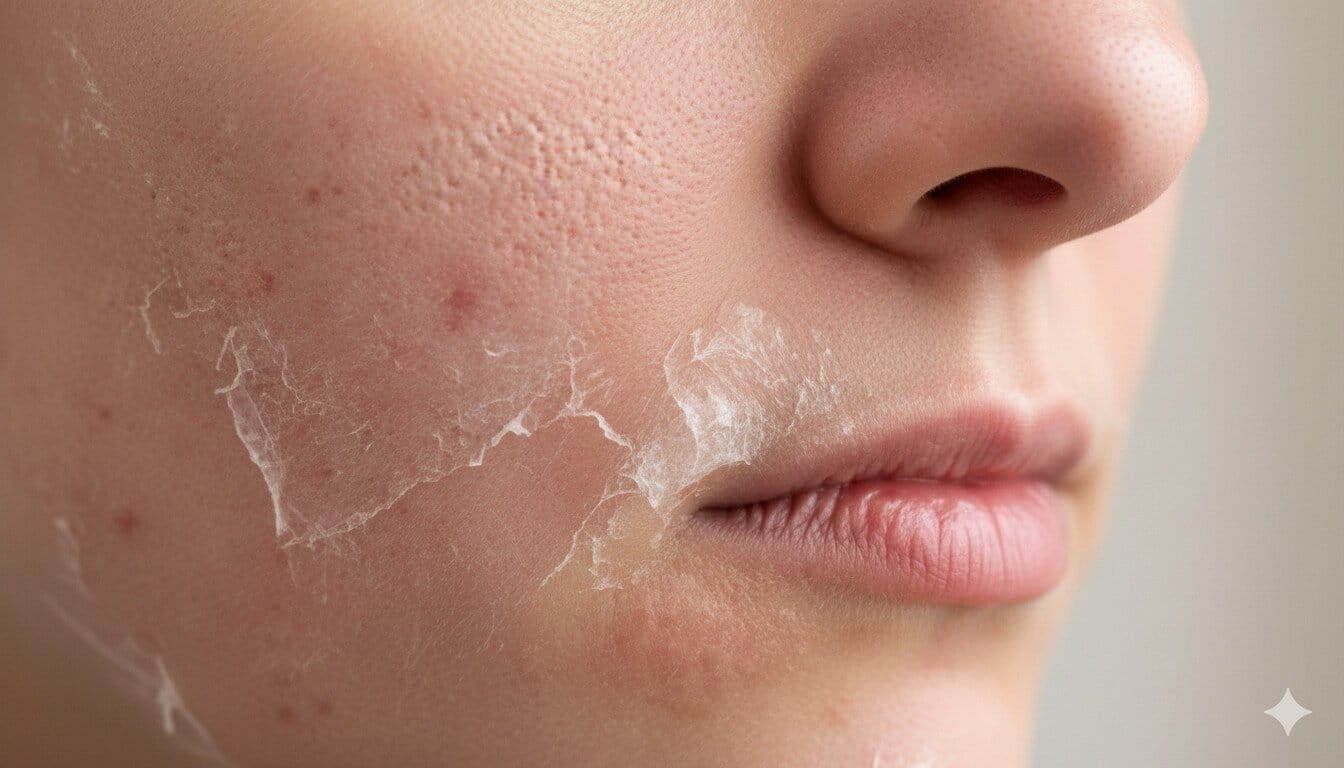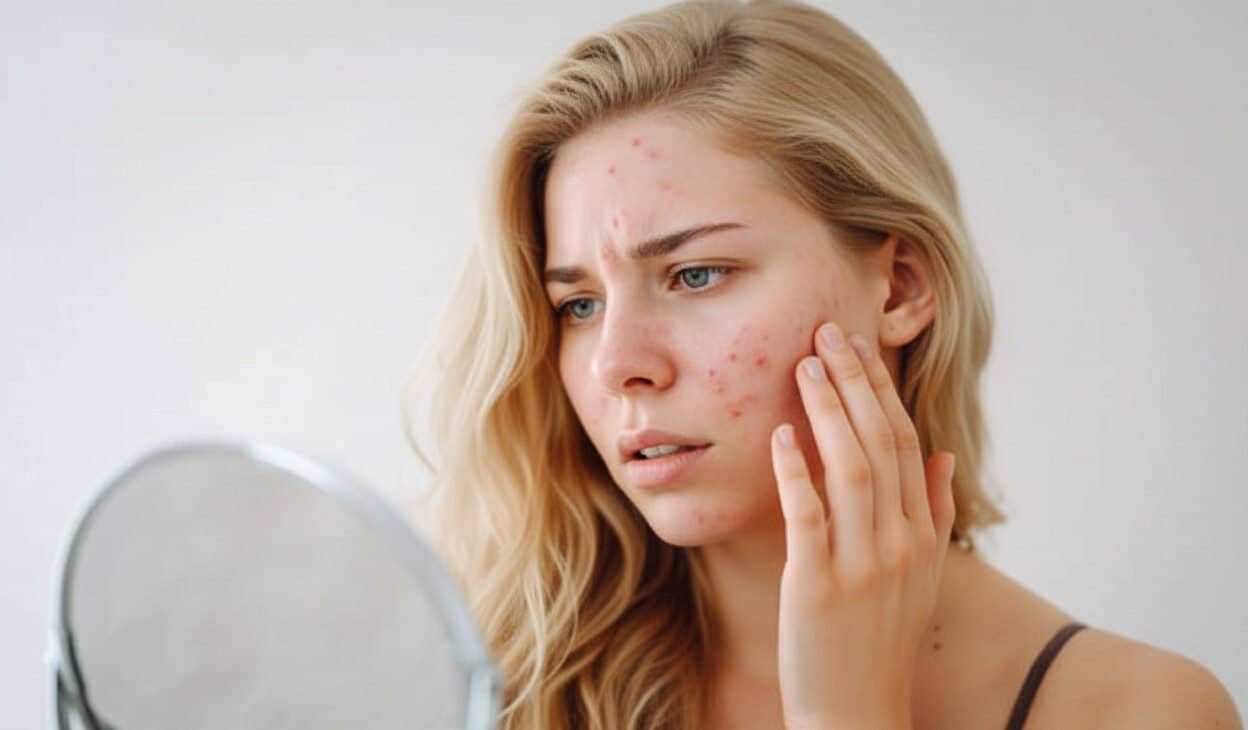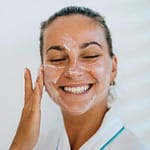How to Get Rid of Acne Scars at Home?

Index
Introduction
Acne scars can be a frustrating reminder of past breakouts, affecting confidence and skin appearance. In the United States, acne is a common skin condition, impacting nearly 50 million people annually, according to the American Academy of Dermatology, and many are left with scars. While professional treatments like laser therapy exist, many seek affordable, accessible ways to reduce acne scars at home.
This guide explores why acne scars form, their types, myths, how to identify them, and practical at-home solutions and prevention tips. This article offers clear steps to improve your skin’s appearance safely and effectively from the comfort of your home.
Why It Happens?
Acne scars result from the skin’s response to acne-related inflammation and damage. Understanding the causes can help you choose the right approach to minimize their appearance.
Skin Healing Process
When acne, such as pimples or cysts, damages the skin, the body initiates a healing process. Collagen, a protein that supports skin structure, is produced to repair the damage. However, if too little or too much collagen is generated, scars form. Insufficient collagen can leave depressions, while excess collagen creates raised scars. This process is natural but varies by individual and acne severity.
Inflammation and Acne Severity
Severe or prolonged acne, like cystic acne, causes deeper skin damage, increasing the likelihood of scarring. Inflammation plays a key role: when pimples become inflamed, they disrupt deeper skin layers, including the dermis. This is common in untreated or poorly managed acne, which affects millions of teens and adults across the US.
Skin Type and Genetics
Your skin type and genetics influence scarring. Oily skin, prevalent in humid regions like Florida or Texas, may be more prone to severe acne and subsequent scarring. Darker skin tones, common among diverse populations, are more susceptible to hyperpigmentation, a type of acne mark. Genetics also determine how your skin heals; if your parents have acne scars, you may be more likely to develop them.
Improper Acne Treatment
Picking, squeezing, or popping pimples can worsen inflammation and damage skin tissue, leading to scars. Harsh scrubbing or using inappropriate products, like abrasive cleansers, can also aggravate the skin. Many Americans, especially those new to skincare, unknowingly worsen acne by using incorrect treatments or neglecting professional advice.
Environmental and Lifestyle Factors
Environmental factors, such as UV exposure in sunny states like California or Arizona, can darken acne marks, making scars more noticeable. Pollution in urban areas like New York or Los Angeles can clog pores, prolonging acne and increasing scarring risk. Lifestyle factors, including stress, poor diet (high in dairy or sugar), and lack of sleep, common in busy cities like Chicago, can exacerbate acne and impair skin healing.
Types
Acne scars come in various forms, each requiring specific treatments. Here are the main types:
Atrophic Scars
Atrophic scars are depressions in the skin caused by insufficient collagen during healing. Common subtypes include:
- Ice Pick Scars: Deep, narrow pits, often on the cheeks.
- Boxcar Scars: Wide, shallow depressions with defined edges.
- Rolling Scars: Wavy, uneven skin texture due to tissue damage beneath the surface.
Hypertrophic Scars
These raised scars result from excess collagen production. They are less common but can appear on the back or chest, especially in those with severe acne.
Post-Inflammatory Hyperpigmentation
Not true scars but dark spots left after acne heals, these are more common in darker skin tones. They can appear brown, black, or purple and often fade over time.
Post Inflammatory Erythema
These are pink or red marks caused by blood vessel damage under the skin. They are more visible on lighter skin tones and may persist without treatment.
Myths
Misconceptions about acne scars can lead to ineffective treatments. Here are common myths debunked:
- Myth 1: Acne scars will disappear on their own. While some marks, like hyperpigmentation, may fade, true scars often require treatment.
- Myth 2: Toothpaste cures acne scars. Toothpaste can irritate skin and worsen scars due to its harsh ingredients.
- Myth 3: Tanning hides acne scars. UV exposure can darken scars, making them more visible over time.
- Myth 4: Only teens get acne scars. Adults, especially those with hormonal acne, can develop scars at any age.
- Myth 5: All acne scars need professional treatment. Many at-home remedies can reduce mild scars effectively.
How It Happens?
Identifying acne scars is the first step to treating them at home. Here’s how to assess your skin.
Self Assessment
Examine your skin in good lighting, preferably natural light. Look for:
- Depressions or pits (atrophic scars).
- Raised, bumpy areas (hypertrophic scars).
- Dark spots (hyperpigmentation).
- Red or pink marks (erythema).
Use a mirror to check hard-to-see areas like the back. Compare your skin to online images from reputable sources, such as the American Academy of Dermatology website. Note if scars are new or old, as newer scars respond better to at-home treatments.
When to See a Dermatologist
While this article focuses on at-home solutions, consult a dermatologist if:
- Scars are deep or widespread, like ice pick or boxcar scars.
- Marks persist despite months of home treatment.
- You suspect skin infection or new acne forming.
Dermatologists in cities like Miami or Seattle can perform tests, like skin biopsies, to rule out other conditions. Telemedicine, via platforms like Teledoc, is an option for initial advice.
Tools and Apps for Tracking
Track your scars’ progress using apps like MySkinTrack or DermDiary. Take photos weekly to monitor changes. Local weather apps can also help you track UV index or pollution levels, which affect scar appearance, especially in areas like Los Angeles or Houston.
Solutions and Preventions
Reducing acne scars at home involves consistent care and safe practices. Below are beginner-friendly options.
At Home Treatments
- Topical Retinoids: Over-the-counter retinoids, like adapalene (Differin), promote cell turnover to fade scars. Apply at night to clean, dry skin.
- Vitamin C Serums: These brighten hyperpigmentation. Try products like The Ordinary Vitamin C Suspension, available at retailers like Sephora.
- Alpha Hydroxy Acids (AHAs): Glycolic acid peels (e.g., The Ordinary AHA 30% + BHA 2% Peeling Solution) exfoliate dead skin, improving texture. Use once weekly.
- Silicone Gels: For hypertrophic scars, silicone sheets or gels (e.g., ScarAway) can flatten raised scars over time.
- Natural Remedies: Aloe vera soothes inflammation, while rosehip oil, rich in vitamin A, may reduce hyperpigmentation. Use pure, high-quality products.
Always patch-test new products to avoid irritation. Consult a doctor if you have sensitive skin or allergies.
Lifestyle Adjustments
- Diet: Reduce dairy and high-glycemic foods, linked to acne flare-ups. Include omega-3s (fish, walnuts) and antioxidants (berries, spinach).
- Stress Management: Practice meditation or yoga using apps like Calm to lower stress, which can worsen acne.
- Sleep: Aim for 7-8 hours nightly to support skin repair. Poor sleep, common in busy cities like New York, can slow healing.
Preventive Measures
- Sun Protection: Apply broad-spectrum SPF 30+ sunscreen daily (e.g., Neutrogena Ultra Sheer). UV rays darken scars, especially in sunny states like Florida.
- Avoid Picking: Never squeeze pimples, as this increases scarring risk. Use spot treatments like benzoyl peroxide instead.
- Gentle Cleansing: Use fragrance-free cleansers (e.g., CeraVe Foaming Cleanser) to prevent irritation. Avoid over-washing, which strips natural oils.
- Moisturize: Keep skin hydrated with products like Cetaphil Daily Hydrating Lotion to support healing.
Skincare Routine Tips
- Morning: Cleanse, apply vitamin C serum, moisturize, and use sunscreen.
- Evening: Cleanse, apply retinoid or AHA (alternate days), and moisturize.
- Weekly: Use a gentle exfoliant or peel to remove dead skin.
Consistency is key. Results may take 6-12 weeks. Avoid mixing strong actives (e.g., retinoids and AHAs) on the same day to prevent irritation.
Suggestion
Start with a simple routine: cleanse with CeraVe Foaming Cleanser, apply The Ordinary Vitamin C Serum in the morning, follow with CeraVe Daily Moisturizing Lotion, and finish with La Roche-Posay Anthelios SPF 30 sunscreen. At night, use Differin Gel (adapalene) three times weekly, gradually increasing as tolerated. These products are affordable and available at US stores like Target or Walgreens.
For hyperpigmentation, add a weekly glycolic acid peel. Track progress with photos and a journal to note changes or irritation. If scars don’t improve after three months or are severe, consult a dermatologist. Join online communities, like those on for tips and support from others.
FAQs
- Q: How long does it take to fade acne scars at home?
A: Mild scars or hyperpigmentation may improve in 6-12 weeks with consistent treatment. Deeper scars take longer and may need professional care. - Q: Are at-home treatments safe for all skin types?
A: Most are safe, but sensitive skin may react to strong actives like retinoids. Patch-test products and consult a dermatologist if unsure. - Q: Can diet really help with acne scars?
A: Diet impacts acne formation, not scars directly, but a balanced diet with vitamins A and C supports skin healing. - Q: Is sunscreen necessary for indoor days?
A: Yes, UV rays through windows can darken scars. Daily SPF is essential, even in cloudy areas like Seattle. - Q: Can I use multiple treatments at once?
A: Avoid combining strong actives (e.g., retinoids and AHAs) on the same day to prevent irritation. Alternate or consult a dermatologist. - Q: Are natural remedies like lemon juice effective?
A: Lemon juice can irritate skin and increase sun sensitivity. Stick to proven options like aloe vera or rosehip oil.
Subscribe to our newsletter!






